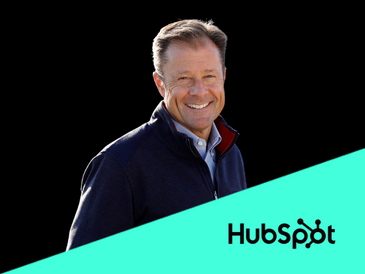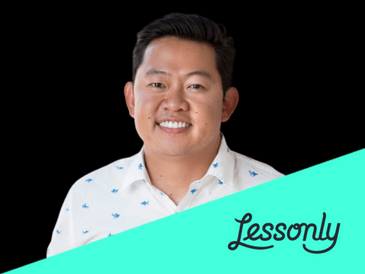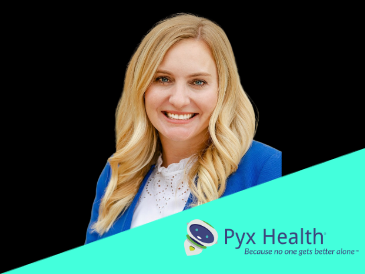Jen Spencer (29:40):
Yeah, it is a shift though for a lot of software companies, a lot of SaaS companies because I grew up in the SaaS sales and marketing world of selling a product before the product exists, right? So I know I'm not the only one, someone else out there listening out there. How many demos-
Rob Giglio (30:03):
Well, there's a reason that we all would say, fake it till you make it. Those phrases come out of somewhere.
Jen Spencer (30:09):
Right? I demoed software that was really just Envision app, clickable screens. And when you do that, you can maybe drive some demand through inbound, but it's definitely not the same. So there are a lot of companies that did get started that way and grew that way and a lot of people made a lot of money. But that playbook, given our conversations about trust and authenticity, that playbook is broken for all of those businesses.
Rob Giglio (30:44):
I agree. I think sometimes you see products in beta and what they'll do is provide a snippet of code that does a certain experience or they'll do dynamic demo kind of thing and they'll build interest and then they'll pay off that interest when they actually launch. That requires some trust on the part of the customer and you have to trust as a business team like, okay, this product's going to actually pay off. Yeah, I mean it's far better if you have a working version.
Jen Spencer (31:18):
Yeah, for sure. So let's go back to your actual role. We were in our dreamland of you're going to create some magical new product, but in your role today, again reminding everyone, you're leading marketing, sales, customer success, and operations.
Rob Giglio (31:37): Revenue operations.
Jen Spencer (31:38):
Revenue ops. Yep. So you can only view one dashboard every morning. You got one. One thing that you're looking at while you're drinking your coffee in the morning making an assumption, maybe it's something else. But what's on that dashboard? What do you need to see every day that tells you, okay, things are healthy, things are on track?
Rob Giglio (31:57):
So our team is working on such a dashboard, we're not done. So to be, again, back to being fully transparent, we're working on it. So it's not something that I get to look at today. It's something that our team is excited about having. What it will have is a view of what we're calling CCOM, customer-centric operating model. And it will be a visual representation of our customer journey from you always think about HubSpot, talking about engaging, delighting, That's our flywheel methodology. Imagine taking our flywheel and just detailing it with customer journey steps. So the flywheel doesn't go away, it's still the flywheel. We're still attracting, we're still engaging and we're still delighting, but we're putting a little granularity between what does it mean to engage? Well, we've got to create awareness. Engagement is we've got to create some sort of behavior, a traffic, a trial, a sign-up, a starter version.
(32:57):
We're then going to engage these customers after we've attracted them. And this engagement might look like a sales presentation, might be a demo. Then they're going to get the product and they're going to begin using it and this is the delight phase. I want to know how the product usage is going, what's the activation rate, what's the seek count, what's the depth of feature use, what's the success? Does our customer feel great about using our product? Then what's the likelihood of renewal and opportunity related to that? So the ultimate dashboard for me allows me to see in macro how customers are moving through our customer journey. Just to make it real for people as they're listening to this and they're thinking, what is this guy talking about? Oftentimes in marketing, we talk about a funnel, we'd say there's the top-of-funnel activity, there's the middle-of-funnel activity and then the bottom-of-the- funnel activity, just put the funnel horizontal.
(33:51):
It doesn't go top to bottom. It goes left to right and think about the same set of steps and ask yourself as a business owner, what could I measure today? What could I actually get a handle on so I could see these customers moving through my journey? So for me every morning, that's what I'd love to be able to use as a dashboard. I'd love to be able to click in. In an ideal world, I get all the way down to an individual customer in an individual country who just bought yesterday and I'm curious now on day two, how many people are using the product that we just sold them and if possible how happy are they? Can I get some kind of NPS view on their satisfaction? That'd be amazing, right?
Jen Spencer (34:33):
Yeah, absolutely. I love it. Well, we'll have to stay in touch to learn more about this dashboard. We are doing a full Flywheel audit of our own business right now and looking at every interaction, every point of friction or force that we have in our organization, both internal and external, and thinking about the customer journey that way. Haven't got quite yet to dashboarding that, but these things have been living in silos or maybe peripherally. We have one between marketing, sales, customer success, sales, customer success, finance, but not full organization, internal, external. And I think it's important and it's something that is not just a one-time thing, it's something as your business grows and changes and it evolves, you have to revisit it.
Rob Giglio (35:29):
For sure, and you may find as a business, you are attracting different customers. So what was working when you had a certain customer profile may not work five years later when you have a different customer profile. And if you're not staying fresh with that, your connection between your functions looks great, but your connection with the customer is disconnected and that's ultimately just as bad.
Jen Spencer (35:50):
Well, I can appreciate just how data-driven you are and what tools, I know you've got at your disposal using HubSpot as the heartbeat of your organization. But when you're communicating externally with external stakeholders, I think about my board and I'm communicating with my board. There are the business metrics and the KPIs that I'm looking at and that my team is reporting on up to me in our organization. But that's a lot of information and if you only could share three key business metrics with a board, right? People, who are external to the organization to let them know how things are going, what would you say those three metrics would be?
Rob Giglio (36:37):
Yeah, so just to clarify, we're going to remove the financial metrics. So sales is off the list and cost of sales is off the list. Okay. So we're just looking at diagnostics. So that's kind of the way we talk about it. We've got financial metrics and then diagnostics and our diagnostics for us and it's actually nice that you said three because the fact you said three, it anchors me down into this flywheel notion where it's attract, engage, and delight. And what I would look for is what's the number one proxy metric for, I'm doing a great job of attracting, what's the, I'm doing a great job of engaging and I'm doing an amazing job of delighting. By the way, in our business, the one that I care about most is the delighting one and the reason is because in a business like ours, we actually have more customers in our base than we will acquire new in a year.
(37:35):
I think for most businesses that's kind of the case. What you care most about are the people you currently have. You have to go get new ones. But really the ones you cannot lose sight of are the ones you already have. So for me, delight would be the North Star metric. For me, the delight metric would be something, and I'm just proxying this. Something related to product usage, the intensity and success of product usage.
(38:01):
Stepping back into the engaged step that's a sales kind of metric. For me I'd probably use close rate, I'd probably use something related to the success of getting a customer interested and then actually creating a relationship with them where they want to buy the product for money. So it was probably related to close rate and then I'm going to go back to the attract phase, which is the how are we bringing people in. That one's a tricky one because there's so many really good indicators that tell us whether we're doing a good job or not. I think I would go with some traffic metric and that one's a little less granular than I would like to have, but you told me I could only have three.
Jen Spencer (38:43):
You can only have three. Yeah.
Rob Giglio (38:45):
Related to traffic because traffic is telling me whether I'm effective at both bringing people in proactively as well as bringing people in passively in a more content-driven inbound motion. So traffic for the attract, close rate for the engage, product usage related to satisfaction in the delight. I would want way more than that by the way but those are my three.
Jen Spencer (39:12):
Yes. Well, I love it. Well I know let's say after you give three, they zoned out, they moved on to the next thing.
Rob Giglio (39:17):
Totally. We have an awesome board though. They'd probably ask me for 50.
Jen Spencer (39:25):
Probably. Probably. Well, HubSpot's such a data-driven organization I'm sure there are accustomed to it too, right?
Rob Giglio (39:31): That's true. That's true.
Jen Spencer (39:33):
Well let's dream a little bit, and I want you to think about your marketing team in particular because so many of our audience, they're focused predominantly on marketing, although everything else we've talked about is very, very relevant. So if you pretend for a second, this is hard for me to do, pretend that time and money are not an issue at all. Where would you ask your marketing team to invest their next group of dollars in?
Rob Giglio (40:07):
Wow. Well, the second you say that that money is just not even a thing.
Jen Spencer (40:14): Yeah.
Rob Giglio (40:16):
I think I'm going to big advertising. I'm going back to what you might consider old-school methodologies and I know that sounds crazy, but let me tell you why I picked that. I picked that because I'm assuming I've got a good product. So back to this point about you have to have a good product or you don't want to get a trial. I'm assuming I have a good product and I'm assuming there's a basic way, it might not be perfect, but there's a way for people to experience it. Those are in my assumption set and the reason I jumped all the way to advertising is that's about expanding the funnel and telling the story and creating awareness at levels that I couldn't do any other possible way.
(41:05):
The reason that we have to caveat it by saying money is no object is that's not what I would do if you said, "I'm looking for really high ROI." That's not what I would do if you said "You only have a certain amount of money." It's a sort of frivolous kind of choice. But I think it's an interesting because you test the boundaries when you say something's frivolous and the boundaries that I'm testing are, can I create amazing awareness, interest, and engagement by spending all that money on advertising? And I don't just mean linear TV, I would do linear TV, I would do outdoor, I would do billboards, I would do T-shirts, I would blanket the world with awareness for whatever my thing is. Granted money is an object, timing is an issue. So that's why we don't do that.
Jen Spencer (41:56):
Of course. Well, and to kind of circle back on what the things we've talked about today, you also have a product that people can try. You have a free product that people can get in and they can start to experience. So you have that benefit because you're not advertising something that then costs somebody millions of dollars right out of the gate before they get any value from it.
Rob Giglio (42:24):
Imagine money was no object, and I could actually tell that story that would be amazing. Tell it from the rooftops.
Jen Spencer (42:32):
Yeah. All right. Well, maybe one day.
Rob Giglio (42:35):
One day. One day when money is no object, we will. For now, we focus on high ROI, great return activity. You've probably seen it. We have begun doing some more traditional television advertising and we're really pleased with that so far. So you may see more of that from us in the future, but we have to do it carefully, thoughtfully. The thing I don't love about up funnel advertising in general is it's super hard to be targeted and ultimately that's our challenge is being targeted enough with the right message is really hard in those forms.
Jen Spencer (43:12):
Well, I am personally waiting for, and I keep thinking, is it happening yet for targeting through streaming services so that they know sometimes I'm watching a show, they know it's me, just like-
Rob Giglio (43:25):
They actually do wait no longer-
Jen Spencer (43:27): They know.
Rob Giglio (43:28):
Well, think about it this way, most of those streaming services have a sign-up and if they have a sign up there assigned to a person, and that person often links back to some other data source. So if you're known, you're targetable. So there are services that can target on streaming. There are services that can target on your television. I mean, you could go pretty granular down to the person if you really were willing to spend the money. But again, that's where the trade-offs happen is it worth it to spend the money to do it?
Jen Spencer (44:03):
Right. Well, I know that we can target by certain audience demographics. I was wondering about if I'm watching a TV show and my husband's streaming the same show upstairs, do we see different ads?
Rob Giglio (44:18):
It depends on who's account ID you're on.
Jen Spencer (44:21):
Oh my gosh. Okay. All right. Well, I'm going to pull myself back from this rabbit hole.
Rob Giglio (44:30):
Yeah. I know it's actually creepy if you go down that rabbit hole, how targetable you kind of are actually. It's pretty crazy. It's pretty crazy.
Jen Spencer (44:36):
But we see it everywhere else on every other platform
Rob Giglio (44:38):
You do. I mean, think about I always when I talk to friends about this in the industry, I always remind them, I go, "Hey, well before you totally freak out, just remember the last time you checked out at a grocery store and they spit out a long receipt with all these things that you're probably going to buy the next time you come back to the store." It's like, they're keeping track of what you're buying at the grocery store in a database so the next time you shop, they're give you a coupon for buying it again and it might not have been what you bought on this particular shopping visit.
Jen Spencer (45:09): Right. Very true.
Rob Giglio (45:10):
Yeah. I personally like that kind of customization. I know I mean this is a whole topic for another podcast, but I know it's fraught with a lot of privacy dynamics and I think it's very personal. People have different personal choices and I think ultimately you have to be able to exercise your personal choice and your personal as opposed to just do anything. But for me personally, I like it. I don't mind getting coupons for, I don't know, some kind of string cheese or something.
Jen Spencer (45:39):
Whatever's relevant as long as it's relevant. Right?
Rob Giglio (45:42): Yep, totally.
Jen Spencer (45:44):
So I have one more question for you, and maybe we'll have a little bit of a call back to other conversations we had, but kind of a final takeaway for our audience. What do you think is the most important thing for marketers to do right now?
Rob Giglio (46:02):
Simplify your message, strip out all the noise, strip out all the jargon, remove buzz words, take away clutter. As I mentioned before, I think there's two things that are really playing big time with consumers and with businesses as they think about buying. One of them is people are overwhelmed by the amount of stimuli. We're just like, there's so much stimuli. As much as I love digital transformation, it creates the opportunity to ingest a lot of information in the form of content and other things. That makes it hard for people. Their brains are tapped. So we as marketers have to simplify the message, make it more clear. Think about the last homepage you were on for a tech company. It sounds like blah, blah, blah, blah, blah, blah. We all have to simplify our message in all of our customer touchpoints. That's one.
(46:59):
Two, because it relates to the second point. It's a way to build trust. We have to right now focus on building trust. So it's simplify the message, emphasize trust. I think if we do those things effectively in the next 18 months, those that do that well are going to weather the storm quite well. Those that don't, it's going to be tough. It's going to be tough sledding because you're telling a confusing message in a cautious market and you're not emphasizing the reason why somebody should actually part with money at a time when that's the last thing they want to do.
Jen Spencer (47:33):
Yeah, very, very wise words. Rob, thank you so much for joining me today. It was definitely a pleasure and I know I'm sure you'll be very busy, but I'm looking forward to hopefully meeting you in person at INBOUND in September.
Rob Giglio (47:47):
Let's do it. For sure. For sure. I appreciate the time. I love your podcast. I hope your listeners and maybe your YouTube viewers find it super helpful.
Jen Spencer (47:58):
Wonderful. Well, thank you all for listening and watching. Please join us next week for another episode of the Intelligent Inbound Podcast. You'll meet another industry expert who like Rob leads an organization deeply rooted in Intelligent Inbound Marketing. And if you learn something today, please pay it forward by rating and reviewing us on your podcast listening platform of choice. Make it a great day, everyone.




